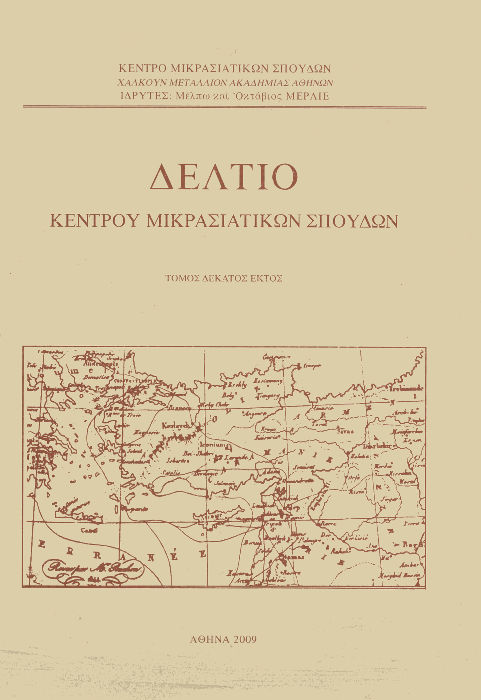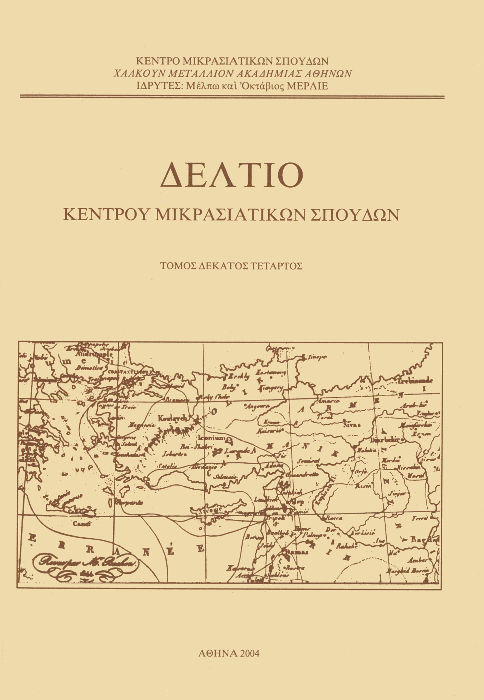Συμβολή στη μελέτη για τον Νικήτα τον Παφλαγόνα
Περίληψη
In the second half of the 9th century a.c. Niketas Paphlagon was born in Byzantium. He was an exceptional personality, who lived until the first half of the 10th century a.c. He was named Paphlagon after the place he was born, that is Paphlagonia of Asia Minor, and is also referred in literature as Niketas David Paphlagon, rhetor, teacher, philosopher, Holy man, slave of Christ and monk. There are some 52 known written works of him, most of them are orations describing the lives of Saints and some encomia. They were all written after the year 910 a.c. when Niketas supposedly withdrew somewhere unknown in Paphlagonia. By his writings about St Stefanus' miracles and the transportation of his relics from Jerusalem to Constantinople, one can conclude that he was living somewhere near Amastris, probably in the city of Dadybra. Niketas' work about the life of St Yakinthos of Amastris supports the hypothesis that he was a bishop of Dadybra and lived there until the end of his life. A reference in the codex A 104 in Dresdes’ Royal Library about a Turkish attack at the city where St Niketas’ body was laying 170 years after his death is in accordance with the first Turkish attacks in Dadybra. From the aforementioned one can conclude that Niketas Paphlagon went to Dadybra of Paphlagonia, near Amastris, after the year 910 a.c., where he was appointed as bishop in the bishopric of Dadybra, served in the church of St Stefanus, wrote all of his works, and stayed there until his death.
Λεπτομέρειες άρθρου
- Πώς να δημιουργήσετε Αναφορές
-
Αρτόπουλος Ι. Γ. (2009). Συμβολή στη μελέτη για τον Νικήτα τον Παφλαγόνα. Δελτίο Κέντρου Μικρασιατικών Σπουδών, 16, 107–118. https://doi.org/10.12681/deltiokms.9
- Τεύχος
- Τόμ. 16 (2009)
- Ενότητα
- Άρθρα

Αυτή η εργασία είναι αδειοδοτημένη υπό το CC Αναφορά Δημιουργού – Μη Εμπορική Χρήση – Παρόμοια Διανομή 4.0.
Οι συγγραφείς των άρθρων που δημοσιεύονται στο Δελτίο διατηρούν τα δικαιώματα πνευματικής ιδιοκτησίας επί των άρθρων τους, δίνοντας στο περιοδικό το δικαίωμα της πρώτης δημοσίευσης. Άρθρα που δημοσιεύονται στο Δελτίο διατίθενται με άδεια Creative Commons 4.0 και σύμφωνα με την άδεια μπορούν να χρησιμοποιούνται ελεύθερα, με αναφορά στο/στη συγγραφέα και στην πρώτη δημοσίευση για μη κερδοσκοπικούς σκοπούς και με δικαίωμα τροποποίησης μόνον με παρόμοια διανομή (αν αναμείξετε, τροποποιήσετε, ή δημιουργήσετε πάνω στο υλικό, πρέπει να διανείμετε τις δικές σας συνεισφορές υπό την ίδια άδεια όπως και το πρωτότυπο).



